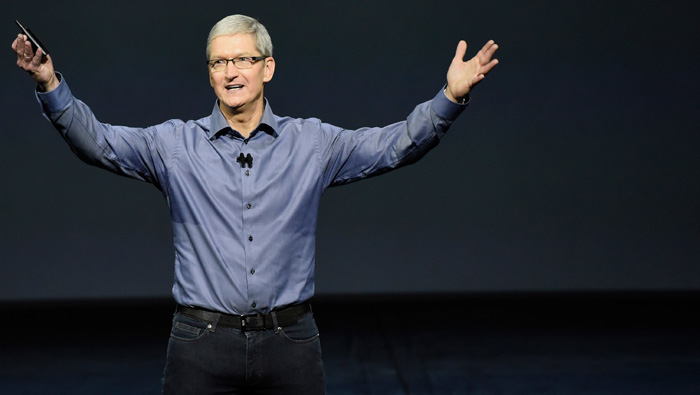
San Francisco: Since Apple introduced the first iPhone in 2007, mobile handsets have only gotten bigger. Chief executive officer Tim Cook will buck that trend on Monday when he presents a smaller iPhone, seeking to entice holdouts to upgrade to a new smartphone even if they don’t want a larger device.
The ambitions for the new phone may be commensurate to its diminutive size. Unlike previous new iterations of the device, the 4-inch iPhone won’t be packed full of technological innovations intended to send hordes of Apple fans queuing around the block on launch day to snap it up. Instead, it’s meant to woo those still clinging to the more than two-year-old 5S or 5C, the last models with the more compact screen.
"It will really just replace the 5S at the low end of the lineup,” said Chris Caso, a New York-based Susquehanna International Group analyst with a positive rating on Apple shares. "The 5S is getting a bit old now and won’t run the operating system that well for much longer.”
The company is rolling out the new phone two months after saying quarterly sales were likely to decline for the first time in more than a decade, highlighting concern that iPhone growth has reached its limits. While analysts from UBS Group to RBC Capital Markets predict that shipments of the iPhone SE — the expected name of the new model — will be about 15 million annually, its smaller size and lower price could encourage existing customers to step up at a time of year when sales often decelerate. Apple sold more than 231 million iPhones in 2015, with sales dipping between April and September, as has been the case in previous years.
Though the event is focused on the new products, Apple followers may pay more attention to anything Cook says about the company’s legal fight with the United States government over an order that it help the FBI unlock a terrorist’s iPhone. After more than a month of sparring — in court filings, Congressional hearings and on national television — the two sides will present their cases on Tuesday before a magistrate judge in Riverside, California.
Cook may use the stage on Monday at the company’s headquarters in California to reiterate Apple’s argument that creating software to degrade the phone’s security features would inevitably endanger the privacy of hundreds of millions of users.
Upgrade slowdown
The company is introducing the new, smaller iPhone at a time when customers are holding onto their handsets longer. Wireless carriers such as AT&T and Verizon Wireless are no longer subsidising new iPhone purchases like they once did, making customers question whether the improvements warrant the expenditure on new models. A slowing upgrade cycle is something Apple has experienced with the iPad, which has seen sales steadily decline for several quarters.
"The replacement cycle for iPhones has stretched to 27 months," compared to the 23 months of two years ago, RBC analyst Amit Daryanani wrote in a note to clients this week. The new handset will "ensure that consumers who have a three-year- old 5S or 5C don’t switch to Android for lack of new iPhone products.”
An older iPhone owner who’s looking to upgrade can currently either spend $549 on the basic version of the iPhone 6 — the 2014 edition — or buy a less-expensive Android-based phone. Apple’s new lower-end model may persuade customers to stick with the company’s products, allowing it to sell services through the App Store or subscription-based products such as Apple Music and iCloud.
The new smartphone will boast a faster processor than the 5S, a person familiar with the details has said. Like the iPhone 5C, it may also be available in a variety of colours, analysts have said.
iPad refresh
Cook will wield a new iPad at Monday’s event as well, details about which are scant. The tablet has endured its own revenue drop — unit sales fell by a quarter in the three months through December — as users have been happy to retain older models as their phones perform more of the same functions.
Releasing the new 4-inch iPhone — which will be manufactured in smaller volumes — now also provides an opportunity for Apple to try out new component suppliers ahead of the next generation of the larger, flagship phone that will be revealed later this year, according to Tim Arcuri, a San Francisco-based Cowen analyst who rates Apple market perform.
"It’s as much a supply chain move from Tim Cook to systematically bring in some new suppliers,” Arcuri said, adding that the product may reduce costs by making the supplier bidding process more competitive. "If I’m Apple, I’m not going to take the risk with a new supplier on a brand new phone, but I can do it on what is essentially an existing product.”